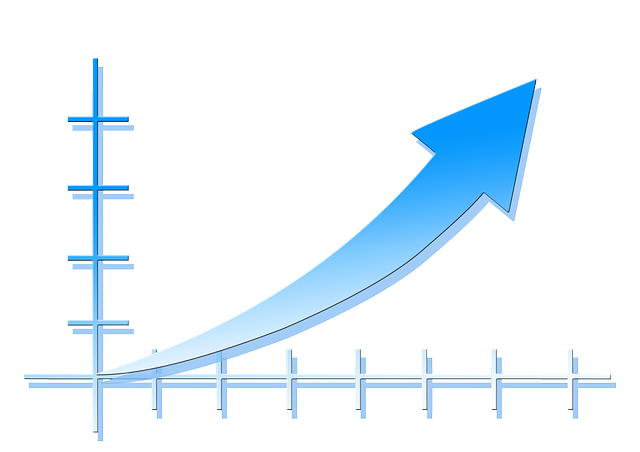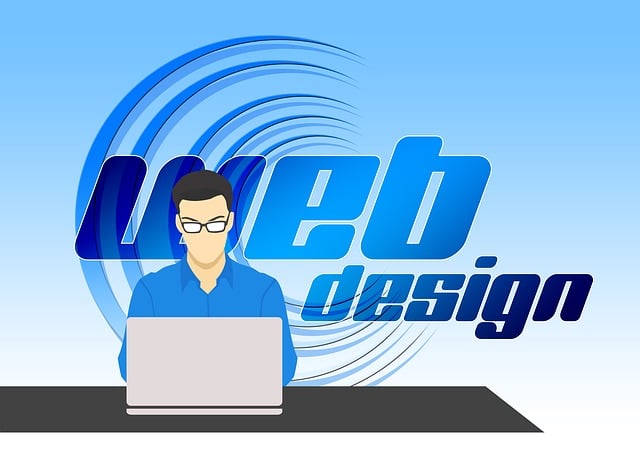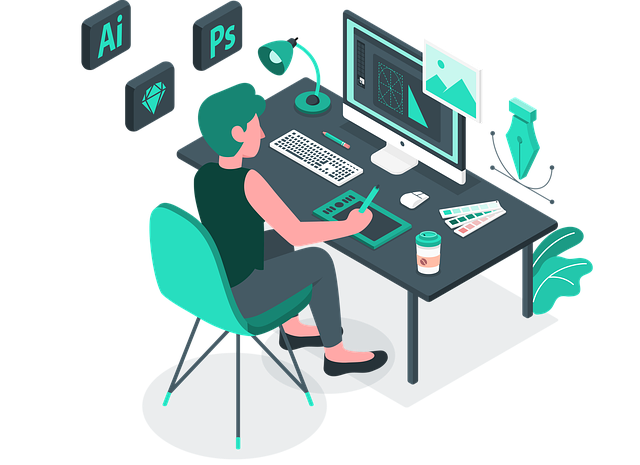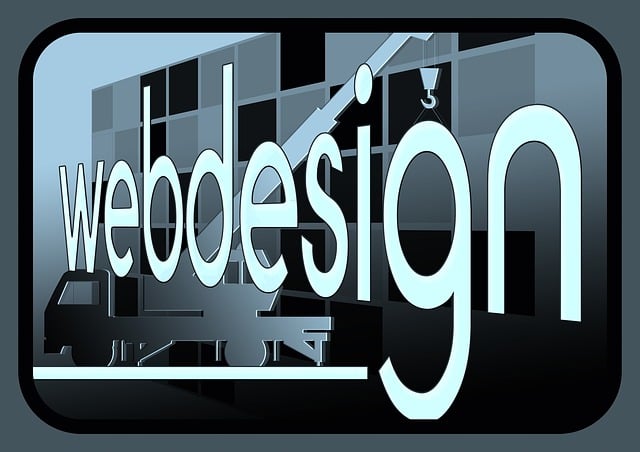The latest web design trends are characterized by a move towards minimalism, clean lines, and decluttered layouts for enhanced user navigation and usability. Micro-interactions add dynamism through subtle animations, while 3D and AR technologies create immersive digital experiences. Bold color schemes and unique typographies enhance visual impact, differentiating brands in a competitive online landscape. Asymmetrical layouts break free from conventions, offering energetic and modern designs that captivate audiences. A mobile-first approach prioritizes optimization for various screen sizes, ensuring fast loading times and intuitive usability. Personalization through AI and machine learning tailors content to individual user preferences, fostering engagement and satisfaction.
Stay ahead of the curve with the latest web design trends transforming digital experiences. From uncluttering websites with minimalism and clean lines to integrating immersive technologies like 3D and AR, this article explores dynamic shifts in visual design. Discover how subtle micro-interactions boost user engagement, bold color schemes make a statement, and asymmetrical layouts break free from convention. We also delve into typography trends, mobile-first optimization, and personalized web design tailored for individual users.
Minimalism and Clean Lines: Uncluttering the Web

In the realm of website design, minimalism is making a strong comeback as one of the latest web design trends. By embracing clean lines and uncluttering layouts, designers are focusing on simplifying user interfaces, making navigation intuitive and enhancing overall usability. This approach not only provides an aesthetically pleasing experience but also reduces cognitive load for visitors.
The trend towards minimalism involves stripping down designs to their essential elements, showcasing content in a clear and concise manner. It’s about creating visually appealing spaces that prioritize simplicity and functionality without sacrificing creativity. This strategy ensures that websites remain unburdened by excessive visual noise, allowing the user’s attention to be directed seamlessly towards key information and calls-to-action.
Micro-Interactions: Adding Subtle Animations for User Engagement

In the realm of the latest web design trends, micro-interactions have emerged as a powerful tool to enhance user engagement and create more immersive experiences. These subtle animations, often overlooked but profoundly impactful, add a layer of dynamism to website interfaces. Micro-interactions can range from a simple button press animation to more complex transitions as users navigate through different pages. By incorporating these tiny yet thoughtful enhancements, designers can capture the user’s attention, provide visual feedback, and foster a sense of delight.
Web designers are leveraging micro-interactions to transform static websites into engaging stories, making user journeys more enjoyable and memorable. As the digital landscape evolves, keeping up with these latest web design trends is essential for creating visually appealing and user-friendly online experiences that resonate with modern audiences.
The Rise of 3D and Augmented Reality (AR) in Web Design

The world of web design is evolving rapidly, and the latest web design trends showcase a growing integration of 3D and Augmented Reality (AR) technologies. These immersive experiences are no longer confined to dedicated apps or games; they’re making their way into websites, offering a fresh and engaging way for users to interact with digital content. Designers are leveraging AR to create interactive, three-dimensional environments that can enhance product presentations, architectural visualizations, and even virtual tours.
This trend is driven by advancements in technology, improved accessibility through smart devices, and a desire to captivate audiences in an increasingly competitive online landscape. As 3D and AR gain traction in web design, we see a shift towards more dynamic, immersive, and user-centric experiences. The latest web design trends are pushing the boundaries of what’s possible, blurring the line between the physical and digital realms to create captivating online environments that truly come alive for users.
Bold Color Schemes: Making a Statement with Vibrant Palettes

In the realm of website design, making a statement with visual impact is crucial for capturing attention in today’s digital landscape. One of the latest web design trends that stands out is the embrace of bold color schemes. By integrating vibrant palettes, designers are revolutionizing user experiences and creating visually stunning interfaces. This trend isn’t just about aesthetics; it serves as a powerful tool to convey brand identity and evoke specific emotions.
Vibrant colors have become a game-changer in modern web design, enabling brands to differentiate themselves and engage users on a deeper level. The latest web design trends encourage designers to move beyond neutral tones, embracing a bolder approach that fosters a unique user experience. This shift towards bold color schemes adds energy and creativity to websites, ensuring they stand out in an increasingly competitive online environment.
Asymmetrical Layouts: Breaking Free from Traditional Structure

In the realm of website design, the latest web design trends are constantly evolving, challenging conventional norms and pushing creative boundaries. One such trend that has gained significant traction is the adoption of asymmetrical layouts. By breaking free from the traditional structured approach, designers are now embracing unconventional compositions. Asymmetrical designs offer a dynamic visual experience, where elements are arranged in unexpected ways, creating a sense of energy and modern appeal.
This shift reflects a broader move towards minimalism, simplicity, and a focus on user engagement. Asymmetrical layouts allow for more flexible content placement, enabling designers to highlight important elements, create focal points, and guide users’ attention organically. In today’s digital era, where users demand immersive experiences, this trend plays a crucial role in capturing and holding their interest, setting websites apart from the crowd and ensuring they stand out as true game changers among latest web design trends.
Typography Trends: Playful Fonts and Creative Lettering

In the realm of visual design for websites, typography plays a pivotal role in capturing and retaining user attention. Among the latest web design trends, playful fonts and creative lettering have emerged as game changers. Designers are moving away from sterile, sans-serif typesets to embrace more expressive and unique typographies that align with the brand’s personality. These trends add a layer of visual interest, making websites stand out in an increasingly competitive digital landscape.
From whimsical hand-drawn fonts to bold geometric designs, playful typography can transform a website’s mood and tone. Creative lettering, too, offers endless possibilities—from artfully arranged words that double as visuals to letterforms that incorporate elements from other design styles. By integrating these trends thoughtfully, web designers are not only enhancing user experiences but also ensuring their websites remain visually compelling in the ever-evolving landscape of latest web design trends.
Mobile-First Approach: Optimizing for Seamless User Experience

In today’s digital landscape, a mobile-first approach is no longer an option but an essential strategy for any successful website. With the majority of internet users accessing sites via their smartphones and tablets, designers are prioritizing mobile optimization to ensure a seamless user experience. This shift reflects the latest web design trends, focusing on creating responsive and adaptive layouts that seamlessly adjust across various screen sizes.
By adopting a mobile-first mindset, designers can deliver content and functionality in a way that caters to the unique interactions and constraints of mobile devices. It involves optimizing elements like typography, imagery, and navigation for smaller screens, ensuring fast loading times and intuitive usability. This approach not only enhances user satisfaction but also improves search engine rankings, as Google prioritizes mobile-friendly websites in its results, making it a crucial consideration in the latest web design trends.
Personalization and Adaptive Web Design: Tailoring Content for Individual Users

In today’s digital landscape, websites are no longer one-size-fits-all. The latest web design trends prioritize personalization and adaptive web design to deliver tailored content for individual users. This approach leverages advanced technologies like artificial intelligence and machine learning to understand user behavior and preferences, allowing designers to create dynamic and engaging experiences. By adapting to each visitor’s unique needs and interests, websites can significantly enhance user satisfaction and retention.
Personalized interfaces can range from simple dynamic content loading based on location or time of day to more complex algorithms that suggest products or services based on browsing history. This level of customization not only improves the user experience but also drives engagement and conversions. As users interact with sites that anticipate their needs, they are more likely to spend longer periods online and return frequently, making personalization a key component of the evolving latest web design trends.
